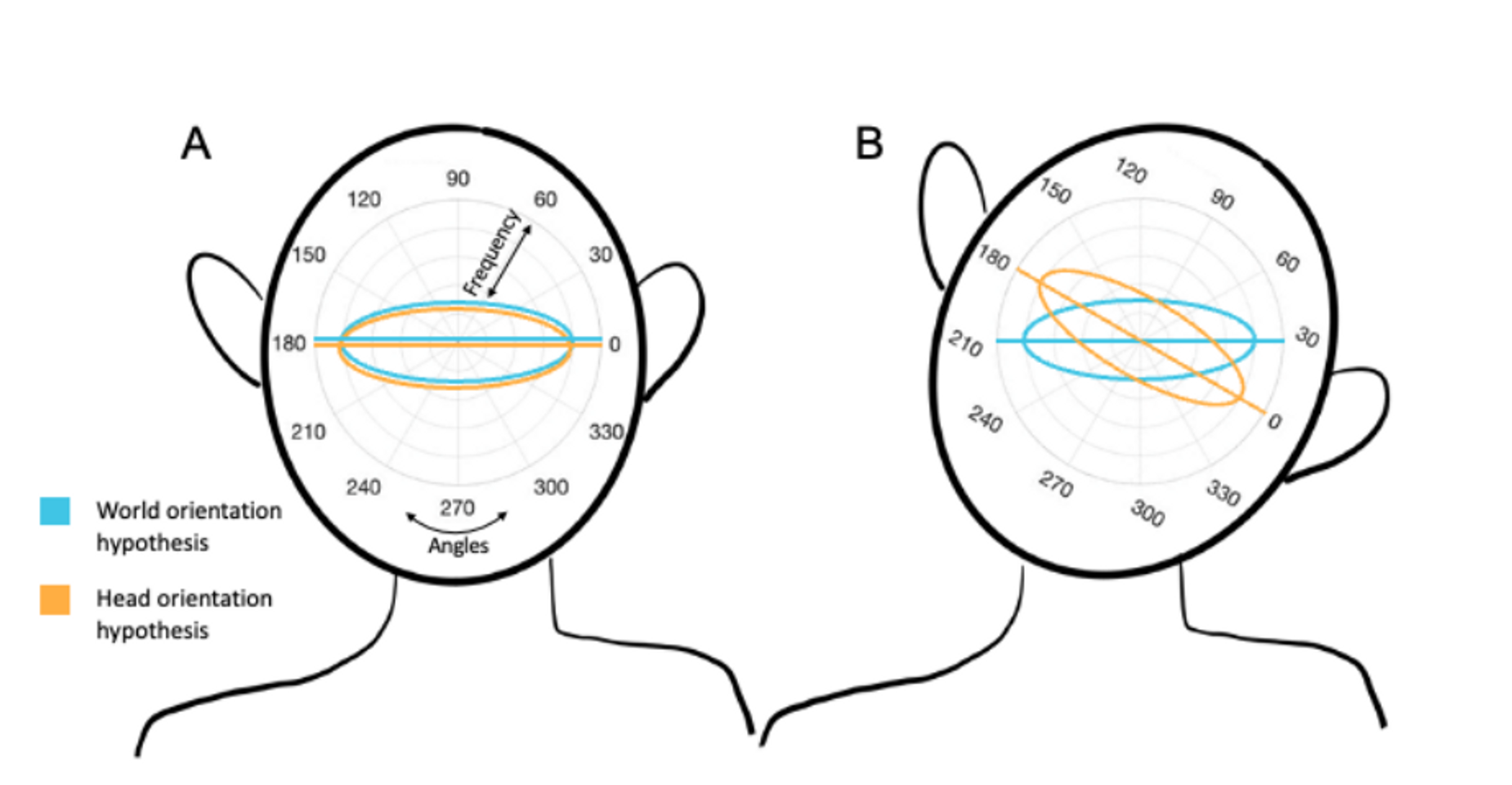
//
Head Orientation Influences Saccade Directions during Free Viewing
Search
Try Notion
Head Orientation Influences Saccade Directions during Free Viewing
Authors text
Reeves, Stephanie, Otero-Millan, Jorge, Rodriguez, Raul, Cooper, Emily
Journal/Book
eNeuro
Year
2022
Abstract
When looking around a visual scene, humans make saccadic eye movements to fixate objects of interest. While the extraocular muscles can execute saccades in any direction, not all saccade directions are equally likely: saccades in horizontal and vertical directions are most prevalent. Here, we asked whether head orientation plays a role in determining saccade direction biases. Study participants (n = 14) viewed natural scenes and abstract fractals (radially symmetric patterns) through a virtual reality headset equipped with eye tracking. Participants’ heads were stabilized and tilted at −30°, 0°, or 30° while viewing the images, which could also be tilted by −30°, 0°, and 30° relative to the head. To determine whether the biases in saccade direction changed with head tilt, we calculated polar histograms of saccade directions and cross-correlated pairs of histograms to find the angular displacement resulting in the maximum correlation. During free viewing of fractals, saccade biases largely followed the orientation of the head with an average displacement value of 24° when comparing head upright to head tilt in world-referenced coordinates (t(13) = 17.63, p < 0.001). There was a systematic offset of 2.6° in saccade directions, likely reflecting ocular counter roll (OCR; t(13) = 3.13, p = 0.008). When participants viewed an Earth upright natural scene during head tilt, we found that the orientation of the head still influenced saccade directions (t(13) = 3.7, p = 0.001). These results suggest that nonvisual information about head orientation, such as that acquired by vestibular sensors, likely plays a role in saccade generation.
Citation
eNeuro 9 November 2022, 9 (6)
Broad Topic
Vision while moving